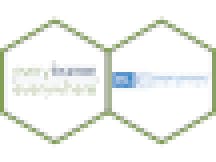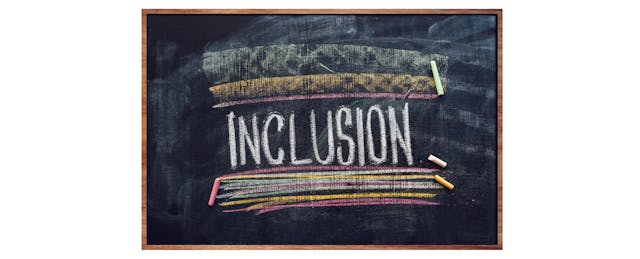How can teachers keep any racial or cultural bias they might have out of their classrooms—and make sure every student feels equally valued?
That’s a question more educators and education leaders are asking these days. It’s part of a growing awareness that teachers need to be more intentional in how they design classroom activities, and how they talk and act to make sure they reach all students—even ones who don’t look like them or who come from very different backgrounds.
To tackle that question, we talked to Justin Reich, the host of a new podcast called TeachLab, which is about the art and craft of teaching. Its first season is devoted to becoming a more equitable teacher.
Reich is an assistant professor at MIT and the director of the Teaching Systems Lab there. He stressed that the purpose of the podcast isn’t about positioning himself as an expert on equity in teaching. Instead, he’s there to listen to educators who have been at this work far longer, and give them a megaphone to share their ideas.
Listen to this week’s podcast on Apple Podcasts, Overcast, Spotify, Stitcher, Google Play Music, or wherever you listen to podcasts, or use the player below. Or read the partial transcript, which has been lightly edited for clarity.
EdSurge: From your personal journey interviewing people about inclusive teaching for your podcast, what was the biggest surprise that you encountered?
Reich: Overwhelmingly, the biggest surprise was how hard it is to answer the question, “What does great equity teaching look like day to day, moment to moment, at a classroom level?” There were very few of our guests who could intuitively rattle off answers to that question that were actionable for any kind of listener.

This week’s podcast is brought to you by “The State of Online STEM Education'' an upcoming national survey of the online STEM landscape created by Every Learner Everywhere and Online Learning Consortium.
Share your experience in these areas; Effectiveness, Opportunities, Challenges, Equity & Access.
Please sign up and take the survey at http://studyinput.com/
This week’s podcast is brought to you by “The State of Online STEM Education'' an upcoming national survey of the online STEM landscape created by Every Learner Everywhere and Online Learning Consortium. Share your experience in these areas; Effectiveness, Opportunities, Challenges, Equity & Access.
One reason is that we think about a lot of these things at the level of lesson planning and curriculum, at higher levels of education design, and less so at the really granular level … the day-to-day interactions. And then second, a lot of really great practice is situated in a particular place. So it’s hard to say things that work everywhere.
We had a great story from Colin Rose, who’s the assistant superintendent for opportunity gaps in Boston, who talks about a couple of teachers trying to do a great job of reaching out to kids and helping kids feel seen in the classroom by celebrating Cinco de Mayo. But in Boston, very few of our Latin American kids are from Mexico. They’re from the Dominican Republic, Puerto Rico, Cape Verde, and they don’t celebrate Cinco de Mayo. And so it was this kind of mismatch between what teachers were trying to do and their deep understanding of community needs.
You also had Geoffrey Canada, the founder of the Harlem Children’s Zone. And what struck me is the part where he said teaching was one of the most complicated professions. What makes it so complicated?
The amazing thing about teaching is how much simultaneous thinking a teacher needs to do, and how many decisions they need to be constantly making. At a minimum, I’m thinking about the substantive domain that I’m teaching about. So if I’m going to teach the history of adaptive tutors in class one day, I’m just thinking about the facts around that.
Also, I’m thinking about the design of my lesson, what I have planned to be able to have people engage with that history. I’m thinking about the clock and where we are in the process, and what I’ve already done and what I have to do later. And then I’m looking at each of my students and seeing how they’re reacting and how they’re responding, what opportunities I have to connect them with things I think they’d be interested in, who I feel is checked out or making some bad decisions or whatever it is.
There was another episode where you all talked about the use of simulation in teaching teachers. The teachers ran through scenarios with actors, to help people in a safe space deal with things around accusations of racism or expressions of racism. Sometimes it sounds like teachers find out through these training sessions that they are more biased than they even realized.
Yeah. [One leadership guru] says that people are always hoping that leadership can be a neck-up activity, that it can be all head and no heart. Lots of things that we do that seem like technical subjects are not like that, including teaching as well.
My hunch is that most people, if they think back over their educational history, can think of a moment where new knowledge or an encounter with new ideas shook them in a really wonderful way. And unfortunately people of color, queer folks and indigenous people can probably also recall a lot of experiences where their encounters with the educational systems were profoundly harmful, were traumatizing, were reinforcing the worst biases and prejudices and structural inequalities in society.
I think simulation is a great way to encounter that work. There’s good evidence that if you get people talking about topics in abstract ways, they will say some things. But if you put them in realistic scenarios and watch how they act, they will not always act in ways that are aligned with what they say.
There’s a guy named Ben Dotger who calls that “conditionally inclusive ideology.” [He argues] that people will describe a commitment to inclusive behaviors in simulated settings where there’s really not that much on the line, [but] they won’t necessarily act in ways that are aligned with those things. So the episode that we have is actually with a colleague, Liz Self, who’s down at Vanderbilt, who’s doing incredible work with simulations to help people think about anti-racist, anti-oppressive practices in teaching. And she’s super inspirational for the work that we do in our lab.
You teach at a college, but many people you interview teach in K-12 schools. When it comes to diversity, equity and inclusion in teaching, is there anything that’s useful to think about as far as the needs of the higher-ed teacher versus K-12?
There are things that any teacher from any background can be thinking about. Two of the most common themes that came up across all of our episodes were the incredible importance of knowing your students. That’s harder to do in a 600-person lecture class, but it’s not impossible—with office hours, with making time to connect with individual people, with exit tickets, with other exercises. Young people understand the limits that teachers are in, and they value whatever steps teachers take towards those things.
Think about these questions: How will curriculum be relevant to young people’s lives? How will it be connected to what you’ve learned about who they are? How do we make it so that in every curriculum, people from all kinds of backgrounds can see themselves in that work?
One of the things that’s so incredible about being an educator is that there’s always more to learn. There are always chances to refine your practice. We have a new, free online course coming out on edX, called Becoming a More Equitable Educator: Mindsets and Practices. And this is one of the themes that we hit on a lot.


